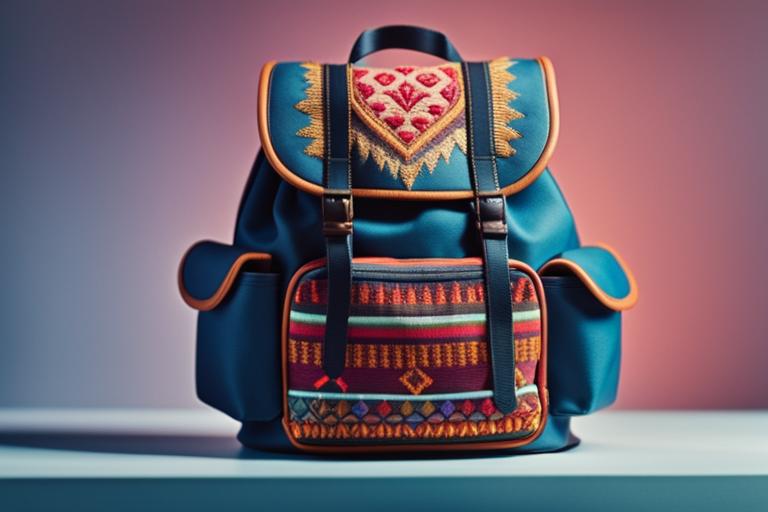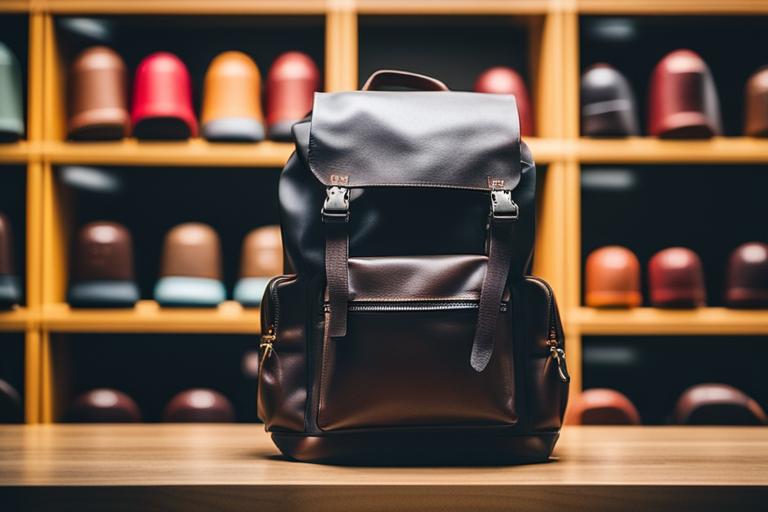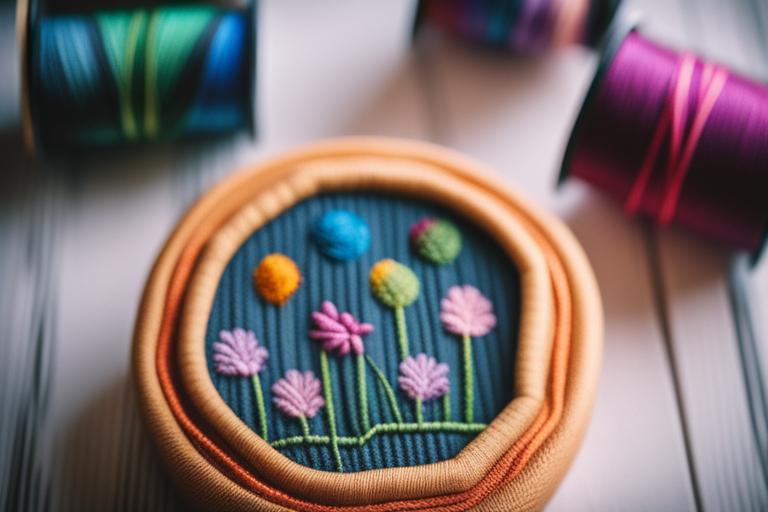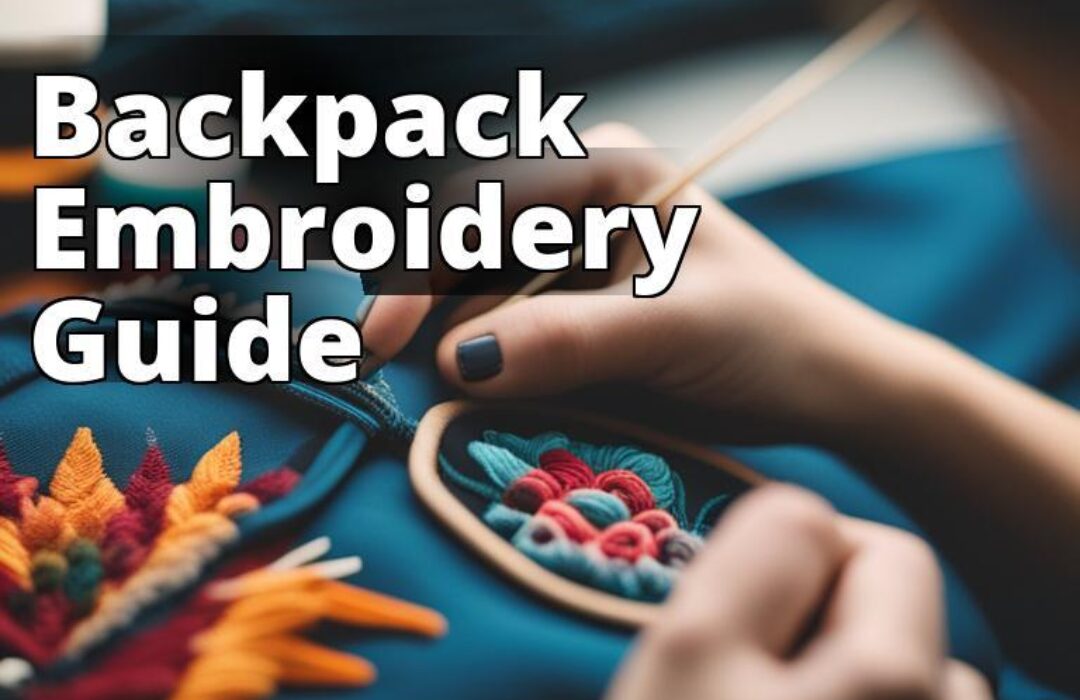Are you looking for a fun and creative way to personalize your backpack? Embroidering your backpack is the perfect solution! Not only will it make your backpack unique, but it’s also a great way to showcase your personality. In this guide, we will provide you with a step-by-step process to embroider your backpack.
How to Embroider a Backpack: A Comprehensive Guide
By reading this article, you will learn:
– Why and how to embroider a backpack, as well as the essential materials needed
– How to choose and transfer a design onto the backpack, as well as embroidery techniques to use
– Tips for finishing and caring for the backpack after embroidery

Getting Started
Before starting the embroidery process, it is essential to know the reasons why you might want to embroider a backpack, the materials you will need, and the types of backpacks that are suitable for embroidery.
Why Embroider a Backpack?
Embroidering a backpack is an excellent way to add a personal touch and make it stand out. You can embroider your name, a favorite quote, or a design that reflects your personality. It’s also a fun and creative activity that can be done alone or with friends.
Essential Materials for Backpack Embroidery
To embroider a backpack, you will need some essential materials, including:
- A backpack (preferably made of a sturdy material like canvas or denim)
- Embroidery floss in your desired color(s)
- Embroidery needles (sizes 7 to 10)
- Embroidery hoop
- Transfer paper or tracing paper
- Scissors
- Fabric marker or pen
- Iron

Types of Backpacks to Embroider
Not all backpacks are suitable for embroidery. Look for backpacks made of a sturdy material like canvas or denim. Avoid backpacks made of thin or stretchy materials as they may be difficult to embroider and could tear or warp during the process.

Selecting a Design
The design you choose for your backpack will determine the final look of the embroidery. There are a few things to consider when selecting a design.
Choosing the Right Design for Your Backpack
Choose a design that reflects your personality, interests, or hobbies. You can also choose a design that matches the style or color of your backpack. Keep in mind the size of your backpack when selecting a design. A large design may overwhelm a small backpack, while a small design may get lost on a large backpack.
Creating Your Own Design
If you have artistic skills, you can create your own design using paper and pencil or a digital drawing program. Make sure the design is simple enough to be easily transferred onto the backpack.
Preparing the Design for Transfer
Once you have chosen or created your design, you will need to prepare it for transfer onto the backpack. You can do this by printing the design onto transfer paper or tracing the design onto tracing paper.
Preparing the Backpack
Preparing the backpack is an important step in the embroidery process. It will ensure that the embroidery looks clean and professional.
Cleaning the Backpack
Before embroidering, it’s important to clean the backpack to remove any dirt or debris. Use a damp cloth to wipe down the backpack and let it dry completely.
Prepping the Backpack for Embroidery
To prevent the backpack from shifting during embroidery, it’s important to stabilize the fabric. You can do this by placing a piece of stabilizer fabric behind the area you will be embroidering.
Securing the Backpack in the Embroidery Hoop
Once the backpack is prepped and stabilized, place it in the embroidery hoop. Make sure the fabric is taut and the area you will be embroidering is centered in the hoop.
Transferring the Design
Transferring the design onto the backpack is a crucial step in the embroidery process. There are several methods you can use to transfer the design.
How to Transfer the Design onto the Backpack
To transfer the design onto the backpack, place the transfer paper or tracing paper onto the backpack in the desired location. Use an iron to press the paper onto the fabric, transferring the design.
Choosing the Best Transfer Method
The best transfer method depends on the type of design and the fabric of the backpack. For detailed or intricate designs, using transfer paper may be the best option. For simple designs, you can trace the design onto the backpack using a fabric marker or pen.
Troubleshooting the Transfer Process
If the transfer does not come out as expected, there are a few things you can do to troubleshoot. You can try using a different transfer method, adjusting the temperature or pressure of the iron, or using a different type of transfer paper.

Embroidery Techniques
Embroidery is a versatile craft with many techniques and stitches to choose from. Here are some basic and advanced embroidery techniques you can use to embroider your backpack.
How to Embroider a Backpack with Basic Stitches
Basic embroidery stitches include backstitch, running stitch, and satin stitch. You can use these stitches to create simple designs or to outline more complex designs.
Advanced Embroidery Techniques for Backpacks
Advanced embroidery techniques include French knots, bullion knots, and chain stitch. These stitches can be used to add texture, depth, and dimension to your design.
Tips for Embroidering Your Backpack
When embroidering your backpack, it’s important to take breaks, use good lighting, and practice on scrap fabric first. Don’t be afraid to experiment with different stitches and colors to create a unique design.
| Needle Size | Thread Type | Suitable Fabrics |
|---|---|---|
| 7 | Cotton floss | Medium-weight fabrics such as cotton, denim, and canvas |
| 8 | Rayon floss | Lightweight fabrics such as silk, organza, and tulle |
| 9 | Wool yarn | Heavy fabrics such as wool, felt, and leather |
| 10 | Metallic thread | Sturdy fabrics such as denim and canvas |
Needles and Threads
Embroidery needles are available in various sizes, and it is essential to use the right size for the thread and fabric. The size of the needle should match the size of the thread. There are also different types of embroidery threads, including cotton, silk, and metallic threads. You can choose the thread depending on the design and the look you want to achieve.
Finishing the Embroidery
Finishing the embroidery is the final step in the process. It’s important to do this carefully to avoid damaging the backpack.
Finalizing the Embroidery
Once you have completed the embroidery, remove the backpack from the hoop and trim any loose threads. Use an iron to press the embroidery, setting the design in place.
How to Finish the Embroidery without Damaging the Backpack
To finish the embroidery without damaging the backpack, be gentle when pressing the iron onto the embroidery. Use a pressing cloth or a piece of fabric to protect the embroidery from direct heat.
Tips for Perfectly Finished Embroidery
To achieve perfectly finished embroidery, use high-quality materials, take your time, and be patient. Remember, practice makes perfect.
Personal Story: The Benefits of Embroidering My Backpack
Embroidering my backpack turned out to be a fun and fulfilling project that allowed me to express my creativity and make my backpack unique. I had always wanted to personalize my backpack, but I was hesitant to do so because I didn’t want to damage it or make it look tacky. However, after doing some research and finding this guide, I realized that I could easily embroider my backpack without damaging it.
I chose a simple design that reflected my personality and started embroidering. As I worked on my backpack, I found that the embroidery process was therapeutic and relaxing. It allowed me to take a break from my busy schedule and focus on something creative.
Once I finished embroidering my backpack, I was amazed at how much it had transformed. The simple design had added a pop of color and personality to my backpack, making it stand out from the rest. I received numerous compliments on my backpack, and it became a conversation starter among my friends and colleagues.
Embroidering my backpack also gave me a sense of pride and ownership. I felt like I had created something unique that reflected my personality and style. It made me appreciate my backpack even more, and I found myself using it more often than before.
Overall, embroidering my backpack was a fun and rewarding experience that I would recommend to anyone. Not only did it allow me to express my creativity and personalize my backpack, but it also gave me a sense of accomplishment and pride.
Caring for Your Embroidered Backpack
Caring for your embroidered backpack will ensure that the design lasts for years to come.
Maintaining the Design
To maintain the design, avoid rubbing or pulling on the embroidery. Store the backpack in a cool, dry place when not in use.
Cleaning the Embroidered Backpack
To clean the embroidered backpack, spot clean with a damp cloth or hand wash with mild detergent. Avoid using bleach or harsh chemicals as they may damage the embroidery.
Storing the Embroidered Backpack
To store the embroidered backpack, place it in a dust-free container or hang it in a closet away from direct sunlight.
Conclusion
Embroidering a backpack is a fun and creative way to showcase your personality and style. With the right materials, design, and techniques, you can create a one-of-a-kind accessory that reflects your unique self. Remember to take your time, practice, and have fun with the process. Happy embroidering!
Questions and Answers
Who can embroider a backpack?
Anyone with basic embroidery skills can do it.
What materials are needed to embroider a backpack?
Embroidery floss, needles, hoop, scissors, and backpack.
How to choose the right backpack for embroidery?
Choose a backpack made of sturdy fabric that can withstand embroidery.
What are the basic embroidery stitches for backpacks?
Backstitch, satin stitch, and French knot.
How long does it take to embroider a backpack?
It depends on the design and complexity, but usually a few hours to a few days.
What if I make a mistake while embroidering?
Don’t worry, mistakes can be undone or covered up with creative stitching.
William is a professional embroiderer with over 10 years of experience in the industry. With a degree in fashion and textile design, William has worked with various high-end fashion brands and designers, creating intricate embroidery designs for their collections. William has also taught embroidery workshops to beginners and advanced students alike, sharing their knowledge and expertise with others.
In addition, William has conducted extensive research on the benefits of personalized items, including backpacks. They have found that personalized backpacks not only serve as a fashion statement but also provide a sense of ownership and individuality. William has also studied the best materials and techniques for embroidering backpacks, ensuring that the design will last for a long time without damaging the backpack itself.
With William’s expertise, you can confidently personalize your own backpack through embroidery with the assurance that it will be done properly and look fantastic.




